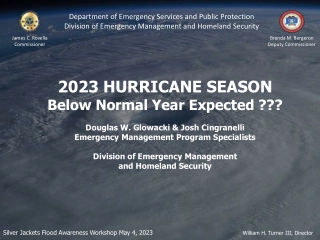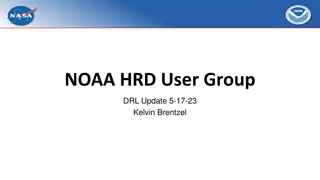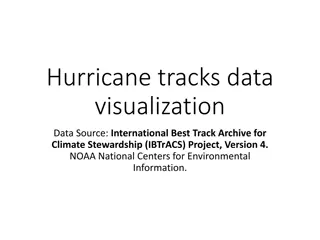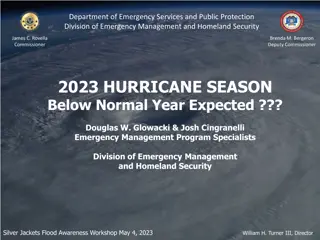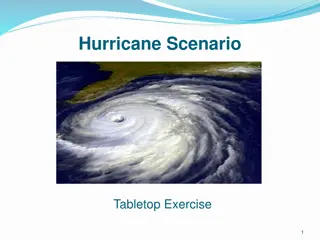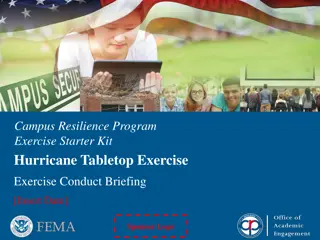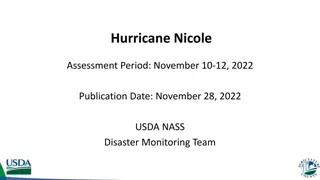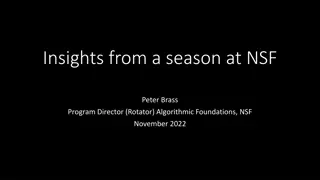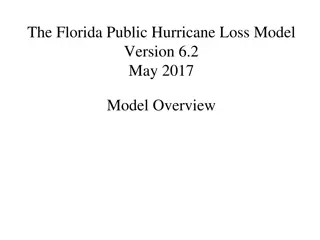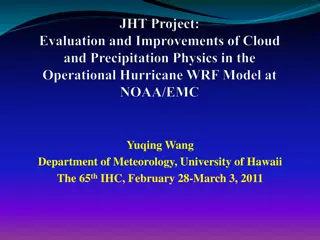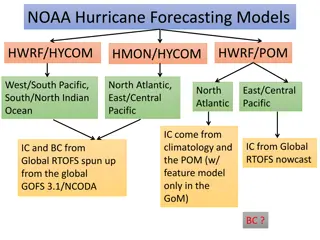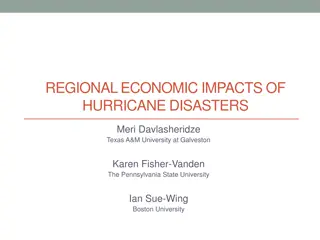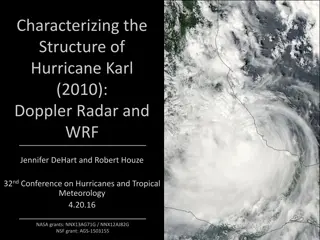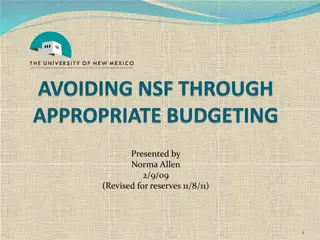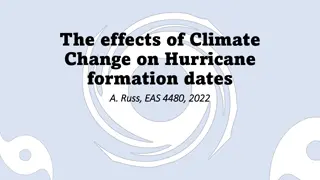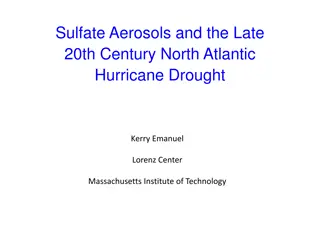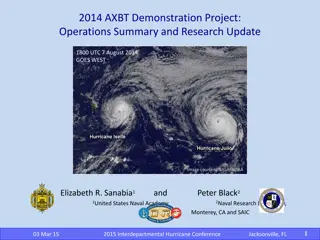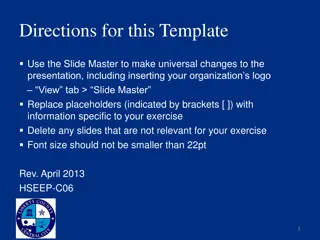NOAA Hurricane Tracker Supported by NSF Collaboration
This work, funded by a collaboration between the NSF's Directorates for Education and Human Resources and Geosciences, focuses on utilizing the NOAA Hurricane Tracker. The effort is backed by grant DUE-1125331.
Download Presentation

Please find below an Image/Link to download the presentation.
The content on the website is provided AS IS for your information and personal use only. It may not be sold, licensed, or shared on other websites without obtaining consent from the author.If you encounter any issues during the download, it is possible that the publisher has removed the file from their server.
You are allowed to download the files provided on this website for personal or commercial use, subject to the condition that they are used lawfully. All files are the property of their respective owners.
The content on the website is provided AS IS for your information and personal use only. It may not be sold, licensed, or shared on other websites without obtaining consent from the author.
E N D
Presentation Transcript
Using the NOAA Hurricane Tracker This work is supported by a National Science Foundation (NSF) collaboration between the Directorates for Education and Human Resources (EHR) and Geociences (GEO) under grant DUE - 1125331
Hurricane Tracker Intro/Sandy http://coast.noaa.gov/hurricanes/
Sandys (2012) Track With a partner, explore Sandy s track . . . Positions are ___ hours apart. Maximum size (Category) on the Saffir-Simpson scale? When and where? When and where was landfall in lower 48? Wind speed then? Where and when was the hurricane moving the fastest? Other interesting observations?
Assignment With a partner, examine historic hurricane tracks: How many hurricanes made landfall in New Jersey 1851-2010? Recurrence interval (average time between hurricanes) in NJ? = total years / # hurricanes (e.g., 150 years / 10 hurr = 15 years/hurricane) Recurrence interval of major hurricanes in New Jersey? If you have time: How many hurricanes have come within 50 miles of your town (or a specific town you are curious about)? Make a list of hurricanes that may have affected your area. Describe the frequency of different size storms. The storm distribution through time is also shown on the bottom axis. Do you see any patterns? http://coast.noaa.gov/hurricanes/
References and Reuse Slide 2. Screenshot from NOAA. Website in public domain. http://coast.noaa.gov/hurricanes/
Sandys (2012) Track With a partner, explore Sandy's track . . . Positions are ___ hours apart. Answer is nuanced: many positions are six hours apart. However, not all positions are six hours apart. This may lead into an interesting discussion of why. (There might be more time between positions on land because the storm stalls, or less time between positions going over Caribbean Islands because of a desire on the part of the person making this plot to show landfall.)
Sandys (2012) Track Maximum size (Category) on the Saffir- Simpson scale? When and where? Hurricanes are classified by the highest category they reach. Sandy reached Category 3 when it made landfall in Cuba.
Sandys (2012) Track When and where was landfall in lower 48? Wind speed then? Brigantine, New Jersey. 80 mph (Category 1).
Sandys (2012) Track Where and when was the hurricane moving the fastest? Sandy gathered speed and increased to a Category 2 for several hours on October 29 as it traveled over the Gulf Stream, and just before making landfall in New Jersey.


